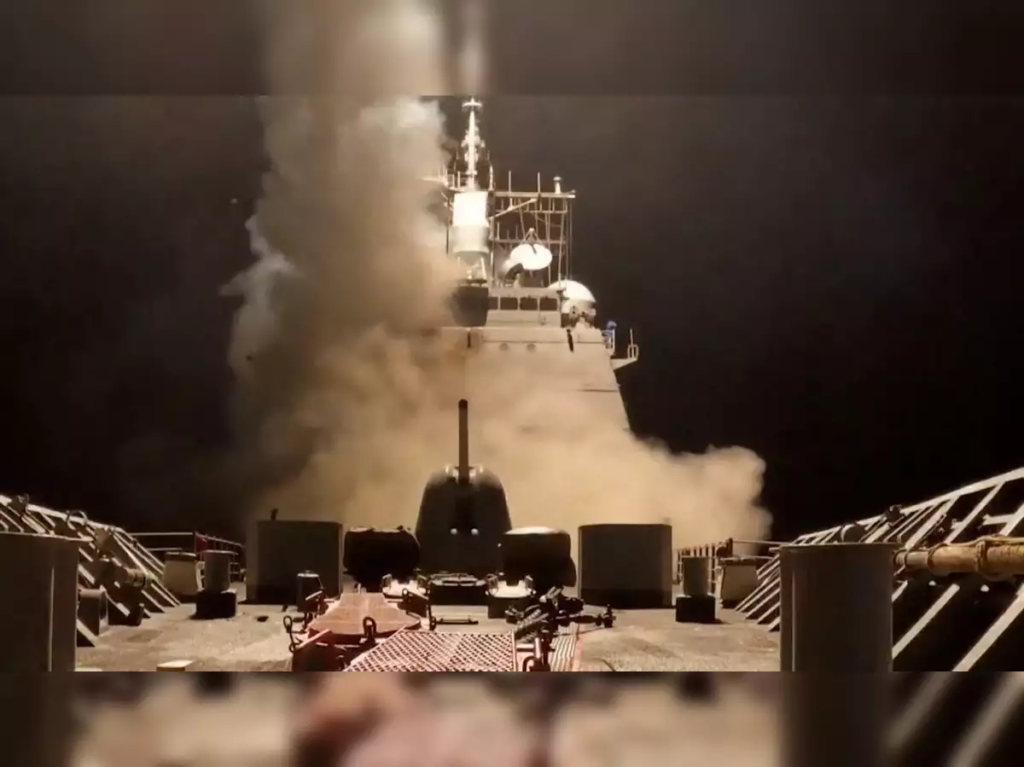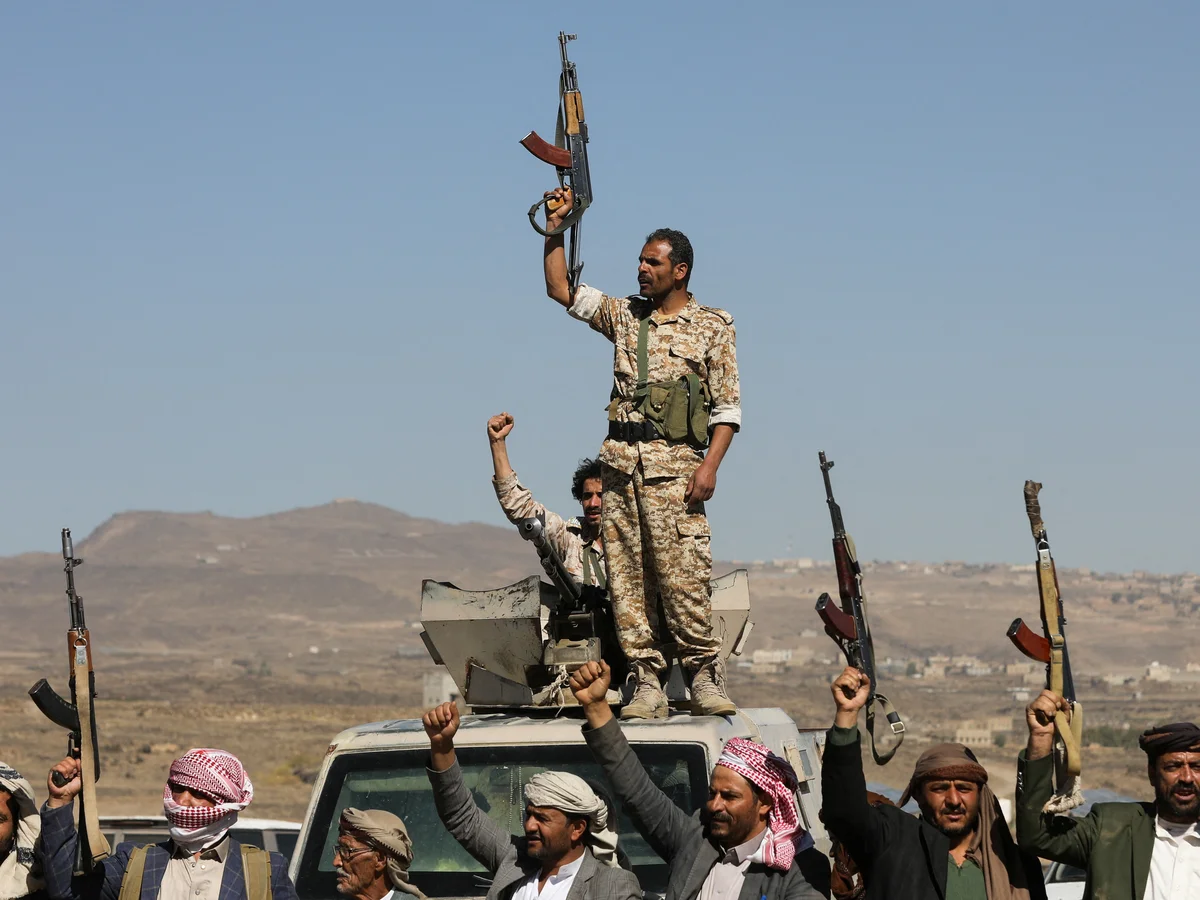Oil refineries, airports, and missile sites have all been hit by US airstrikes against Houthi targets in Yemen. President Trump has promised to use “overwhelming force” until the US stops the Houthis from targeting shipping in the Red Sea.
The Houthis began the campaign in solidarity with Palestinians when Israel went to war in Gaza in October 2023. The group has carried out more than 100 attacks and have sunk two vessels. As a result, the lengthy route around southern Africa now accounts for 70% of merchant shipping that used to pass through the Red Sea.

The US says the campaign is working. National Security Advisor Mike Waltz said that multiple Houthi leaders had been killed.
However, defiance grows with each strike. One seasoned Yemeni observer refers to the Houthis as the “honey badgers of resistance,” a reference to the ferocious mammal known for its fearless attitude toward predators. They get up minutes later and attack the cobra after being bitten by it.
Analysts say that while as many as 80 Houthi military officers may have been killed, the senior ranks of the military and political leadership appear to be unharmed. Likewise, at least some of its locations for missile launch.
The Houthis have launched a barrage of drones and missiles at US navy ships and a dozen ballistic missiles at Israel since the middle of March. While none caused major damage, the threat remains.

The Houthis survived several offensives during the long presidency of Ali Abdullah Saleh in Yemen, then a Saudi offensive ten years ago, followed by more recent Israeli, UK and US airstrikes.
According to Ahmed Nagi, a senior analyst at the International Crisis Group who studies Yemen, Israel and the Western powers do not have a comprehensive understanding of the Houthis. “Their internal structure and opaque leadership have resulted in persistent intelligence gaps.” Another Yemen expert, Elisabeth Kendall, questions the endgame of the US campaign. “The Houthis have been bombed tens of thousands of times over the past decade and remain undeterred. As a result, one comes to believe that the bombing is primarily a performative act: “Let’s show the world – we’ll do it because we can.” Saturday in Sanaa, Yemen, smoke rises from a location reportedly hit by American airstrikes. Related piece After Trump orders “decisive” strikes against the Houthis in Yemen, dozens of deaths are reported. “They are a movement with a lot of aggression. The best way to end them permanently is to overthrow them, remove them from the capital, remove them from the Red Sea coast.”
Analysts and diplomatic sources in the region agree that the Houthis, who currently control much of northern Yemen and the capital, Sanaa, can only be defeated with a ground offensive.
The United States is mistaken, according to International Crisis Group senior Yemen analyst Ahmed Nagi, in thinking that airstrikes can force the Houthis to back down. “This strategy didn’t work under the Biden administration, and it doesn’t seem like it will work under the Trump administration.” “Their logic is shaped by years of war; they see resilience as a form of strength and are driven to prove they are not easily deterred.”
“The only times I’ve ever seen the Houthis go to the negotiating table or compromise has been when they’ve been threatened with the realistic prospect of defeat on the ground: territorial loss, loss of control of populations and loss of access to the Red Sea coastline,” said Knights.
In 2017, when UAE-backed forces threatened Houthi access to the Red Sea, which is essential for the Houthis’ revenue and military supplies, this briefly occurred.
The Houthis, if anything, may actually be relishing US strikes. They are a “direct answer to the Houthi prayers to have a war with the US,” said Farea Al-Muslimi, a Yemeni research fellow at Chatham House. The group “wants to drag the US into a larger regional escalation.”
A ground assault The internationally recognized government that controls a portion of the south and is supported primarily by the UAE is fighting the Houthis for control of Yemen. The unanswered question is whether forces loyal to that government can take the fight to the Houthis. “They’re already trained and equipped,” says Knights. However, there are doubts regarding their unity. Other than a few special forces to assist in directing airstrikes, analysts do not anticipate the United States placing any troops on the ground. The US would perhaps provide [Yemeni forces] “with a bit of logistics, certain key munitions,” Knights says.
The UAE would be “quietly supportive” as it has long supplied the Aden-based government, he adds.

At the site of a reported US air strike on March 24 on Yemen’s Houthi-held capital Sanaa, a man stands amid the rubble of a collapsed building. A man stands amidst the rubble of a collapsed building at the site of a reported US air strike on Yemen’s Houthi-held capital Sanaa on March 24. Mohammed Huwais/AFP/Getty Images.
The Saudi viewpoint is less apparent. Knights believes Riyadh is apprehensive about the Houthis retaliating with long-range drones and missiles against its infrastructure. But the US has accelerated deliveries of anti-missile defenses to Saudi Arabia in recent months.
According to Knights, the United States will need to communicate with Riyadh that “We are going to protect you in the same way that we protected Israel in 2024 from the two rounds of Iranian strikes.” According to diplomatic sources in the region, preparations are being made for a ground operation that would be launched from the south, east, and coast. A coordinated offensive could also involve Saudi and US naval support in an attempt to retake the port of Hodeidah.
The Iran linked.
The past ten years have shown mixed results, with successes in some areas and failures in others, so the question of whether such an operation is feasible is still open. The link to Iran From day one, President Trump and other US officials have linked the campaign against the Houthis to Iran. Trump stated that Iran would face “dire” consequences for any attacks by the Yemeni militants and would hold it accountable for “every shot” fired by the Houthi rebels.
So far it hasn’t, and it’s unclear whether Tehran can simply order the Houthis to stop firing. While very much part of Iran’s axis of resistance, the Houthis retain considerable autonomy.
Trump continues to warn Iran that it will face a massive bombing campaign if it doesn’t do a deal to limit its nuclear and ballistic missile programs. For the administration, the Houthi campaign and the “maximum pressure” campaign on Tehran are two sides of the same coin.
Offering their ally in Yemen moral support, the Iranians are treading carefully. Former Iranian Revolutionary Guards commander Mohsen Rezaee hailed “the barefooted resistance forces of Yemen, who will bring advanced American warships to their knees.”
However, as it works out Trump’s combination of a small carrot and a large stick, the Iranian leadership does not want to be seen as providing additional military support for the Houthis at this time. The US appears ready to expand its campaign. On the island of Diego Garcia in the Indian Ocean, B-2 bombers and KC-135 refueling aircraft have arrived. That may presage strikes on hardened targets in Yemen but may equally be a signal to Iran.
The honey badgers’ resilience may be put to the ultimate test in the coming weeks.




